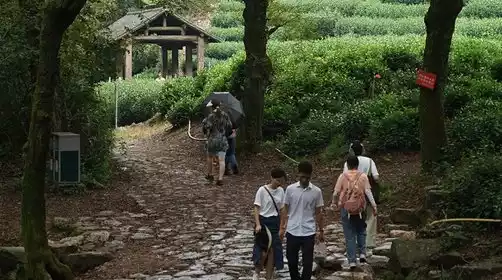Day 1 Hangzhou City
All day
Team members who arrive early can go to [Faxi Temple] on their own. "Four hundred and eighty temples in the Southern Dynasties, how many pavilions are shrouded in mist and rain." There are three famous temples on Tianzhu Mountain, which were called "Tianzhu Three Temples" (commonly known as Upper Tianzhu Temple, Middle Tianzhu Temple and Lower Tianzhu Temple). Upper Tianzhu Temple was first built in the Later Jin Dynasty of the Five Dynasties and is the birthplace of China's White-robed Guanyin. Emperor Qianlong of the Qing Dynasty named the Upper, Middle and Lower Temples "Faxi Temple", "Fajing Temple" and "Fajing Temple", and wrote the temple plaque himself. The temple architecture is solemn, simple and elegant, and the main colors of red, yellow, gray, black and green are harmoniously matched, showing the unique aesthetic of the Jiangnan region. The three Tianzhu temples have similar histories, are located in close proximity, share the same teachings and beliefs, and have experienced both prosperity and decline. Historically, they have been hailed as the "Buddhist Kingdom of Tianzhu." With a 10-yuan incense fee (three incense sticks are provided upon entry), a 5-yuan vegetarian meal (not yet open), and representative works of Jiangnan garden temples, this thousand-year-old temple has been given new vitality. Pilgrims flock to it in an endless stream, and young people are checking in one after another, making it a new business card for Hangzhou temples.
We gathered at the temple exit around 11:30 AM to begin our hike! Stretching before exercise is essential, and while stretching, everyone got to know each other through the warm-up session.
After packing up, we started to climb the mountain! We circled along the bluestone path to the top of the mountain and rested for a while in the pavilion.
The rest of the path was relatively flat, and we walked along the bluestone slabs along the mountain ridge, enjoying a panoramic view overlooking the terraced tea plantations. [Longjing Village] was surrounded by greenery, with white walls and black tiles, like a landscape painting. Following the [Shili Langyao] path, we entered Longjing Village. Legend has it that when Emperor Qianlong traveled south of the Yangtze River, he visited the Hu Gong Temple at the foot of Shifeng Mountain in Longjing Village to taste West Lake Longjing tea. He praised it so much that he named the 18 tea trees in front of the temple "Imperial Tea." The village is filled with the fragrance of tea, and it's a great place to sit down with a few friends to enjoy tea and chat.
Follow the cobblestone path at the foot of Lion Mountain to the Nine Creeks and Eighteen Streams. The scenery is natural, with little artificiality. "The streams meander along the mountain," swerving left and right. Six of the streams flow through the path, marked by stone steps. Visitors can wade through the streams or traverse them on foot, each offering its own unique charm. Immersed in the scenery, you'll feel a sense of tranquility and a sense of being transported within a painting.
Our activity ends here after we arrive at Jiuxi Bus Station along the scenic road. See you next time, all the travelers who love the mountains!




